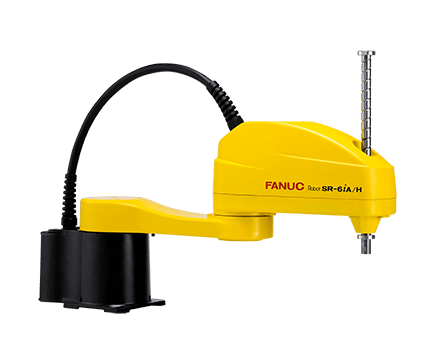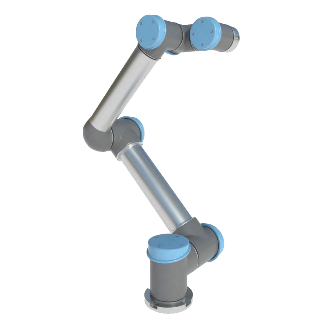Comparison of SCARA and Collaborative Robots
When it comes to small parts material handling applications two industrial robot options are SCARA and collaborative robots. Both are common types of industrial robots used in manufacturing. These compact robots can automate similar applications, but each have their own set of unique characteristics that make them standout from one another. Below is a comparison of SCARA and collaborative robots.SCARA Robots
SCARA stands for Selective Compliance Articulated Robot Arm. These robots got their start in the late 1970s when they were only used to automate assembly applications. Over the years SCARA robots have expanded their scope of applications to include material handling tasks such as packaging, light palletizing, and picking. They are also now being used to automate inspection, 3D printing, and dispensing applications.The structure of SCARA robots features an articulated robot like design. The FANUC SR-6ia along with other SCARA robots are configured with a two link robotic manipulator arm that is attached to a robotic base. The range of motion for SCARA robots is limited with only three to four axes. Axes along the X and Y planes have flexibility with movement while the two axes along the Z plane are fixed. This combination of dynamic and rigid movements is what makes SCARA robots ideal for automating assembly applications, especially inserting tasks. The rigidity of the Z plane mitigates errors for the best repeatability amongst all industrial robots.
SCARA robots are light payload robots. The FANUC SR-20ia is one of the higher payload SCARA robots at 20 kg. Most range between 0.5 kg to 20 kg.
The biggest advantage of SCARA robots is their speed. They are some of the fastest industrial robots due to their four-axis configuration and small footprint. Cycle times can be significantly reduced with the FANUC SR-3ia without sacrificing accuracy.
Collaborative Robots
Collaborative robots are relatively new to the industrial robot market, unlike SCARA robots who are one of the oldest industrial robot types. Collaborative robots or cobots as they are also known, are mainly used for material handling automation. Processes they can automate include palletizing, packaging, picking, and assembly. They can also automate dispensing, painting, sealing, machine tending, and material removal. They are now even being used to automate welding applications. Cobots are capable of automating a greater variety of tasks than SCARA robots.Collaborative robots also feature a structure similar to articulated robots with a jointed robotic arm attached to a base. Cobots are built with six axes giving them a fuller range of motion than SCARA robots with each axis having full flexibility on all planes. Cobots are designed to operate alongside humans with built-in sensors to detect abnormal force. The Universal UR5 is able to slow or stop operation when abnormal force is detected to avoid collisions. In addition, cobots feature rounded edges and no pinch points for extra collision protection.
Cobots are also light payload robots. The FANUC CR-35ia is currently the highest payload cobot at 35 kg. Other cobot payloads fall under 35 kg.
The biggest advantage of cobots is their barrier-free operation which allows them to work collaboratively with humans, increasing productivity. The elimination of barriers also streamlines the robotic system, taking up minimal space.
Robots Done Right is the place to start when it comes to used robots. Contact us if you are interested in buying or selling a used robot.

